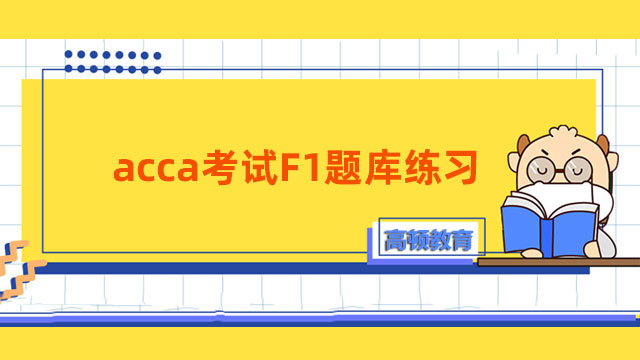ACCA考试P1-P3模拟题及解析20
来源:
高顿网校
2014-08-06
2014年12月ACCA备考已经开始了,以下是高顿网校小编为学员整理的:ACCA P1-P3模拟题及解析,供学员参考。
Introduction
Flexipipe is a successful company supplying flexible pipes to a wide range of industries. Its success is based on a very innovative production process which allows the company to produce relatively small batches of flexible pipes at very competitive prices. This has given Flexipipe a significant competitive edge over most of its competitors whose batch set-up costs are higher and whose lead times are longer. Flexipipe’s innovative process is partly automated and partly reliant on experienced managers and supervisors on the factory floor. These managers efficiently schedule jobs from different customers to achieve economies of scale and throughput times that profitably deliver high quality products and service to Flexipipe’s customers.
A year ago, the Chief Executive Officer (CEO) at Flexipipe decided that he wanted to extend the automated part of the production process by purchasing a software package that promised even further benefits, including the automation of some of the decision-making tasks currently undertaken by the factory managers and supervisors. He had seen this package at a software exhibition and was so impressed that he placed an order immediately. He stated that the package was ‘ahead of its time, and I have seen nothing else like it on the market’.
This was the first time that the company had bought a software package for something that was not to be used in a standard application, such as payroll or accounts. Most other software applications in the company, such as the automated part of the current production process, have been developed in-house by a small programming team. The CEO felt that there was, on this occasion, insufficient time and money to develop a bespoke in-house solution. He accepted that there was no formal process for software package procurement ‘but perhaps we can put one in place as this project progresses’.
This relaxed approach to procurement is not unusual at Flexipipe, where many of the purchasing decisions are taken unilaterally by senior managers. There is a small procurement section with two full-time administrators, but they only become involved once purchasing decisions have been made. It is felt that they are not technically proficient enough to get involved earlier in the purchasing lifecycle and, in any case, they are already very busy with purchase order administration and accounts payable. This approach to procurement has caused problems in the past. For example, the company had problems when a key supplier of raw materials unexpectedly went out of business. This caused short-term production problems, although the CEO has now found an acceptable alternative supplier.
The automation project
On returning to the company from the exhibition, the CEO commissioned a business analyst to investigate the current production process system so that the transition from the current system to the new software package solution could be properly planned. The business analyst found that some of the decisions made in the current production process were difficult to define and it was often hard for managers to explain how they had taken effective action. They tended to use their experience, memory and judgement and were still innovating in their control of the process. One commented that ‘what we do today, we might not do tomorrow; requirements are constantly evolving’.
When the software package was delivered there were immediate difficulties in technically migrating some of the data from the current automated part of the production process software to the software package solution. However, after some difficulties, it was possible to hold trials with experienced users. The CEO was confident that these users did not need training and would be ‘able to learn the software as they went along’. However, in reality, they found the software very difficult to use and they reported that certain key functions were missing. One of the supervisors commented that ‘the monitoring process variance facility is missing completely. Yet we had this in the old automated system’. Despite these reservations, the software package solution was implemented, but results were disappointing.
Overall, it was impossible to replicate the success of the old production process and early results showed that costs had increased and lead times had become longer.
After struggling with the system for a few months, support from the software supplier began to become erratic. Eventually, the supplier notified Flexipipe that it had gone into administration and that it was withdrawing support for its product. Fortunately, Flexipipe were able to revert to the original production process software, but the ill-fated package selection exercise had cost it over $3m in costs and lost profits. The CEO commissioned a post-project review which showed that the supplier, prior to the purchase of the software package, had been very highly geared and had very poor liquidity. Also, contrary to the statement of the CEO, the post-project review team reported that there were at least three other packages currently available in the market that could have potentially fulfilled the requirements of the company. The CEO now accepts that using a software package to automate the production process was an inappropriate approach and that a bespoke in-house solution should have been commissioned.
Required:
(a) Critically evaluate the decision made by the CEO to use a software package approach to automating the production process at Flexipipe, and explain why this approach was unlikely to succeed. (12 marks)
(b) The CEO recommends that the company now adopts a formal process for procuring, evaluating and implementing software packages which they can use in the future when a software package approach appears to be more appropriate.
Analyse how a formal process for software package procurement, evaluation and implementation would have addressed the problems experienced at Flexipipe in the production process project. (13 marks)
(25 marks)
Answer:
(a) A critical evaluation of using the software package approach at Flexipipe could be structured around three factors. The first concerns the wisdom of using a package solution for a process where the company enjoys a competitive edge over its competitors. The second factor focuses on the difficulties of selecting an appropriate package in an environment where requirements are difficult to define and are still subject to change. The final factor revolves around the problem of successfully procuring a software package in an organisation which lacks both experience and a process for selecting and procuring a nonstandard software application. Each of these factors is now considered in turn. Other appropriate factors and relevant approaches will be given credit.
Competitive edge
It is generally accepted that software package solutions cannot provide organisations with a competitive edge. By definition such packages are available to all companies in a sector or market and so any commercial advantages offered by the package are available to all organisations competing in that market.
It is recognised that the control of the production process at Flexipipe was very innovative. It provided the company with significant competitive edge over their competitors. For this reason, it seemed unlikely from the start that Flexipipe would find a package that fulfilled its exact requirements and that any selected package would constrain the production process. Indeed,this is what happened, with the new system unable to replicate the flexibility and efficiency of the existing one.
Initially, the company would have been advised to consider the location of the process on the Harmon process/strategy grid.
The process is strategically important and relatively complex. Software package solutions should primarily be considered for reasonably straightforward commodity processes which have low strategic importance to the company, such as payroll and accounts. Thus, in the context of Flexipipe, a bespoke software solution would, from the outset, appear to have been more appropriate.
Complexity and nature of requirements
It was recognised from the start that it was relatively difficult to specify all the requirements of the production process in advance because many decisions were intuitively taken by experienced managers and supervisors on the factory floor. It was often difficult for them to explain why they had taken certain effective decisions. It is very risky to select a software package against incomplete or unarticulated requirements. If significant requirements are missed or misunderstood then it is difficult to address the problems this might cause.
There are at least three potential approaches to addressing the problem of the software failing to fulfil requirements, but each of these has disadvantages. The first approach is to ask the software vendor to integrate these requirements into the next release of the package. However, even if the software vendor agrees, it may be a costly solution as well as allowing such innovations to become available to all users of the package. The second approach is to ask the software vendor to build a tailored version of the application to fulfil specific requirements. This is likely to be expensive (so reducing the cost advantages of buying a package) and cause long-term maintenance problems and costs as the tailored version has to be integrated with new releases of the standard software package. The final approach is to seek a manual work-around for the missing requirements. However, this may also be costly as well as reducing the business benefits which should have been obtained.
Whichever approach is taken, it is likely to either reduce the benefits or increase the costs of adopting a software package solution.
It was also recognised that requirements are likely to change in the long term. There is no guarantee that the software vendor will develop the package to fit newly emerging requirements and so the issues of tailoring and work-around will again have to be considered. Most package selection takes place against current requirements and so this approach is well-suited to circumstances where requirements rarely change and, if they do, they are specified by legislative bodies and the software vendors must make the changes to keep their product compliant. Payroll and integrated accounts applications are typical of this. Applications that are subject to long-term changes (such as the production process at Flexipipe) and do not require legislative compliance, are less appropriate to this approach.
Absence of mature procurement process and management expertise
It was recognised from the outset that Flexipipe did not have an established process for software package selection and implementation. This was a very risky project in which to try and establish a process and select an appropriate package. Lack of procurement expertise in general has been a problem in the past for the company when a key supplier of raw materials for the pipes went out of business. This caused short-term production problems, although an alternative supplier had eventually been found. However, procurement still only employs two people full-time and they are relatively junior and overworked.
The company appears to have a very immature procurement process.
The long-term commitment to an external supplier is very problematic in software supply, where moving formerly in-house applications to a new supplier can be technically difficult, expensive and disruptive. In general, there are significant risks associated with the long-term viability of software suppliers and the maintenance of software applications that are critical to the company. Companies go out of business, as in the case study scenario, and companies are sold. It is feasible that a software supplier might be bought by a competitor of Flexipipe, threatening long-term supply. These problems are largely absent in bespoke development, particularly if this development is undertaken in-house. The software program code belongs to the company (not the supplier) and its long-term development is under its control.
(b) In the context of the Flexipipe project, here are some of the issues that could have been addressed by a formal software package evaluation process. It is important that candidates identify elements of the process relevant to the Flexipipe scenario.
A generic evaluation process is insufficient.
The business case for all software procurement projects should be assessed to see if a package is an appropriate solution.
In some instances a bespoke IT development may be better suited. As mentioned in the answer to the first part of this question, the Harmon grid considers process complexity and strategic importance and it could have been used as a guide to assessing the appropriateness of the software package solution approach. If it had been used at Flexipipe then it seems likely that the software package approach would have been abandoned at an early stage of the project.
The requirements must be carefully and comprehensively specified before embarking on a procurement exercise.
Difficulties with specifying requirements may again lead to a re-consideration of the bespoke approach. In the case study scenario,mention is made of the system failing to fulfil a number of functional requirements, such as monitoring process variance. The inference is that these requirements were either not specified or were incorrectly specified in advance and so were not part of the package assessment. Similarly, problems with ‘usability’ may be due to the failure of defining specific usability requirements in advance and so these were not considered when the package was evaluated.
The tendering method has to be made more formal and competitive. A post-project review has shown that there were at least three other packages which should have been considered in the evaluation process. A more formal process would have had a mechanism for finding these potential suppliers. The openness of the tendering process would also have been assisted by advertising in trade magazines and internet tendering sites, which may have also brought forward other potential suppliers.
This is an important step because it allows a transparency in the process, and avoids selecting a supplier purely on the recommendation of one internal employee: as in the case of Flexipipe. It would have avoided the situation of a package being selected solely on the basis of a visit to an exhibition.
Suppliers who submit tenders must be evaluated against criteria agreed in advance. Buying a software package leads to a long-term relationship between the supplier and the customer, so the latter must be comfortable with the supplier’s credentials. In the context of Flexipipe this would involve setting standard measures and minimum values for liquidity, gearing and profitability. There also has to be some way of off-setting the supplier’s suitability with the suitability of the product. That is, how a package with limited functionality from a well-established, financially sound supplier is evaluated against a more functional, usable package from a newly established company with high financial gearing and low turnover. The balance between such factors has to be established in advance, often using a high-level weighted matrix. In the context of the scenario, appropriate financial checks should have identified the high gearing and poor liquidity of the supplier that eventually led to its collapse.
A proper process also needs to be in place to evaluate the potential solution against the specified requirements. It is important to establish the ‘fit’ between the requirements and the potential solution and to use this ‘fit’ in the final selection.
It has been stated elsewhere that it is unlikely that a package solution will exactly fulfil all requirements. However, if the ‘fit’is known and understood in advance then negotiation with users may lead to them dropping, modifying or finding workaround for these gaps. Perhaps some of the functional shortcomings identified by users might have been tolerated, if they had been known and understood in advance.
Finally, a planned implementation is an important part of the process. Perhaps the lack of usability of the software was down to the absence of training and the belief that users could ‘to pick up the software as they go along’. This is a risky approach, even in circumstances even with experienced users and in a situation where the software product is a good fit with their requirements.
高顿网校小编寄语:生活充满了选择,而生活的态度就是一切。

扫一扫微信,*9时间获取2014年ACCA考试报名时间和考试时间提醒
高顿网校特别提醒:已经报名2014年ACCA考试的考生可按照复习计划有效进行!另外,高顿网校2014年ACCA考试辅导高清课程已经开通,通过针对性地讲解、训练、答疑、模考,对学习过程进行全程跟踪、分析、指导,可以帮助考生全面提升备考效果。
报考指南:2014年ACCA考试备考指南
免费题库:2014年ACCA考试免费题库
考前冲刺:ACCA备考秘籍
高清网课:ACCA考试网络课程
报考指南:2014年ACCA考试备考指南
免费题库:2014年ACCA考试免费题库
考前冲刺:ACCA备考秘籍
高清网课:ACCA考试网络课程
版权声明:本条内容自发布之日起,有效期为一个月。凡本网站注明“来源高顿教育”或“来源高顿网校”或“来源高顿”的所有作品,均为本网站合法拥有版权的作品,未经本网站授权,任何媒体、网站、个人不得转载、链接、转帖或以其他方式使用。
经本网站合法授权的,应在授权范围内使用,且使用时必须注明“来源高顿教育”或“来源高顿网校”或“来源高顿”,并不得对作品中出现的“高顿”字样进行删减、替换等。违反上述声明者,本网站将依法追究其法律责任。
本网站的部分资料转载自互联网,均尽力标明作者和出处。本网站转载的目的在于传递更多信息,并不意味着赞同其观点或证实其描述,本网站不对其真实性负责。
如您认为本网站刊载作品涉及版权等问题,请与本网站联系(邮箱fawu@gaodun.com,电话:021-31587497),本网站核实确认后会尽快予以处理。
点一下领资料
【整理版】ACCA各科目历年真题
真题高频考点,刷题全靠这份资料
下载合集
acca全科学习思维导图
梳理核心考点,一图看懂全部章节
下载合集
2023年acca考纲解析
覆盖科目重难点,备考按照计划走
下载合集
acca备考 热门问题解答
- acca考试怎么搭配科目?
-
建议优先选择相关联的科目进行搭配报考,这样可以提高备考效率,减轻备考压力,1、F1-F4:为随时机考科目,难度较低,这里可以自行随意选择考试顺序。2、F5-F9:如果你的工作的和财务会计或者审计有关、或者你比较擅长财务和审计的话,推荐先考F7和F8。你可以选择一起考ACCA考试科目F7和F8或者先考F7(8)再考F8(7),这就要取决你一次想考几门。3、P阶段:选修科目中,建议企业首选AFM!第二部分科目进行选择,如果AA和SBR掌握学生更好,可以通过选择AAA,如果SBL掌握的好,可以自己选择APM。
- acca一共几门几年考完?
-
acca一共有15门考试科目,其中有必修科目和选修科目,考生需要考完13门科目才能拿下证书。
- acca一年考几次?
-
acca一年有4次考试,分别是3月、6月、9月和12月,分季机考科目是采取的这类四个考季的模式,而随时机考则是没有这方面的时间规定限制,可以随报随考。
- acca的含金量如何?
-
ACCA证书的含金量是比较高的,从就业、能力提升、全球认可等角度来说,都是比较有优势的证书,其含金量主要表现在以下几个方面:1、国际化,认可度高;2、岗位多,就业前景好;3、缺口大,人才激励。
严选名师 全流程服务
其他人还搜了
热门推荐
-
acca考试F1题库练习,考生必备! 2023-03-20
-
acca2022真题下载流程介绍,必做考前模考题! 2023-02-24
-
ACCA试卷出题形式?ACCA考试最快多久能通过? 2021-07-24
-
ACCA官方样题 F4(ENG) F8 2021-01-07
-
ACCA考试P1-P3模拟题及解析9 2021-01-07
-
四大会计事务所2017年终精华会评(中) 2018-02-01
-
2016年ACCA F1模拟练习题及答案 2016-02-29
-
2016年ACCA F8每日一练:Professional ethics 2016-01-26
-
2016ACCA考试F8自测题:Corporate governance 2016-01-26
-
关于ACCA考试P7中的专业和道德问题 2015-11-24
-
ACCA P5精选模拟题之战略性绩效考核 2015-10-10
-
ACCA F9模拟测试题之投资评估 2015-10-10
-
ACCA P3精选练习题之战略管理和组织变革 2015-10-10
-
2014年ACCA《公司法与商法》真题及答案七 2015-07-20
-
2014年ACCA《公司法与商法》真题及答案七 2015-07-20
-
2014年ACCA《公司法与商法》真题及答案六 2015-07-20
-
2014年ACCA《公司法与商法》真题及答案五 2015-07-20
-
2014年ACCA《公司法与商法》真题及答案四 2015-07-20
-
2014年ACCA《公司法与商法》真题及答案三 2015-07-20
-
2014年ACCA《公司法与商法》真题及答案二 2015-07-20
-
2014年ACCA《公司法与商法》真题及答案一 2015-07-20
-
2014年ACCA《公司法与商法》真题及答案八 2015-07-20
-
2015年ACCA考试模拟题 2015-06-26
-
2015年ACCA考试精选测试题汇总 2015-06-19
-
2015年ACCA考试《财务成本管理》模拟题汇总 2015-06-18
-
2015年ACCA考试F8模拟试题:Financial Management 2015-06-18
-
ACCA考试2015年《财务成本管理》模拟练习汇总 2015-04-27
-
ACCA考试2015年《财务成本管理》模拟练习5 2015-04-27
-
ACCA考试2015年《财务成本管理》模拟练习4 2015-04-27
 更多服务
更多服务

















